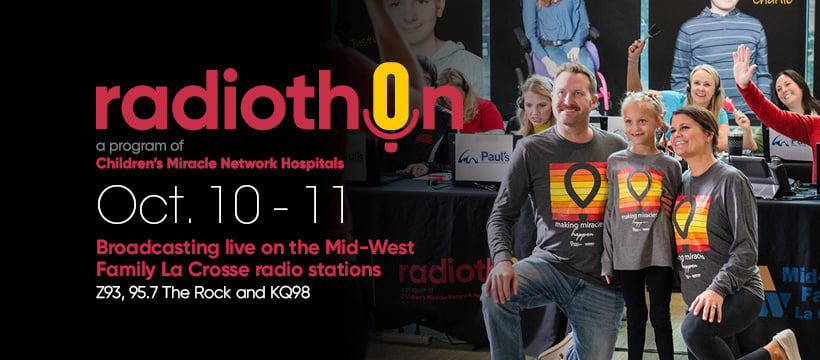Elevating Engagement: A Strategic Map Across the Customer Landscape
Elevating engagement demands a strategic approach that spans the entire customer journey, from initial awareness to long-term loyalty. This process isn’t just about grabbing attention; it’s about forging lasting relationships that cultivate loyalty and advocacy. Astute business owners recognize the importance of every touchpoint, understanding that success depends on identifying and optimizing these pivotal moments. In today’s fiercely competitive market, the ability to connect with customers on a deeper, more meaningful level can distinguish a business from its competitors.
Understanding the customer journey begins with a comprehensive map that details each phase, illustrating how potential leads evolve into loyal customers. This strategy must encompass various stages, including initial contact, personalized nurturing, and delivering exceptional service that meets individual needs. Ensuring a seamless and cohesive experience across these stages requires meticulous planning and execution.
But what does this strategic map look like? It starts with building awareness, aimed at capturing attention and sparking interest. This is followed by the consideration phase, where nurturing leads with relevant content and offers becomes crucial. As we move forward to the decision and purchase phases, it’s essential to provide compelling reasons for customers to choose your brand. Finally, the retention and advocacy stages involve exceptional post-purchase support that fosters enduring loyalty.
As we delve deeper into each of these phases, you will uncover actionable insights and proven tactics to enhance audience engagement. Let’s begin by exploring the critical first step: building awareness and capturing attention in a crowded marketplace.
Understanding the Customer Journey
The customer journey encompasses a multi-stage process involving various interactions and touchpoints between the customer and the brand. To enhance engagement, businesses must understand and strategically influence each phase of this journey. The key stages typically include:
- Awareness: This initial phase aims to make potential customers aware of your brand. Marketing efforts, such as advertisements, social media campaigns, and content creation, are designed to capture attention and generate interest.
- Consideration: Once awareness is established, the next step is to nurture leads with relevant content and offers. This stage involves building trust and positioning your brand as a viable solution in the minds of potential customers.
- Decision & Purchase: Here, customers actively evaluate different options and decide which product or service to purchase. It’s crucial to provide compelling reasons for them to choose your brand over competitors during this phase.
- Retention: After a purchase is made, retaining customers becomes critical. Exceptional post-purchase support ensures that customers feel valued and satisfied, increasing the likelihood of repeat business.
- Advocacy: Loyal customers not only make repeat purchases but also become advocates for your brand. This stage leverages customer loyalty to spread positive word-of-mouth and attract new customers through recommendations.
Awareness: Capturing Attention
The first step in the customer journey is creating awareness. This stage focuses on reaching as many potential customers as possible with your message. Effective strategies include:
- Broadcast Radio: Advertising on traditional radio can help businesses reach a broad audience and build brand awareness. Radio ads capture listeners' attention during commutes or daily activities, making radio a valuable tool in the awareness stage.
- Content Marketing: Develop valuable and informative content that resonates with your target audience. Blog posts, videos, infographics, and social media posts are powerful tools. High-quality content not only attracts potential customers but also establishes your brand as a trusted authority in your industry.
- SEO and SEM: Optimize your website for search engines and invest in search engine marketing to increase visibility. Ensuring your site appears in relevant search results attracts organic traffic from people already interested in your offerings.
- Social Media: Utilize social media platforms to share content, engage with followers, and run targeted ads. Social media allows for direct interaction with potential customers and can amplify your brand’s reach through shares and likes.
By implementing these strategies, you can effectively capture the attention of potential customers and begin guiding them through the subsequent stages of the customer journey.
Purchase: Driving Conversions
Transforming interested prospects into paying customers is the essence of the journey. Effective conversion strategies include:
- User-Friendly Website: Ensure your website is intuitive, fast, and mobile-responsive. Streamline the checkout process to minimize friction and enhance the user experience.
- Personalization: Leverage data to customize the shopping experience, from personalized product recommendations to tailored promotions. This can significantly boost customer satisfaction and increase the likelihood of a purchase.
- Retargeting Ads: Utilize retargeting ads to remind potential customers of products they’ve viewed or left in their cart. Retargeting helps keep your brand top of mind and encourages prospects to complete their purchase.
Retention: Maintaining Engagement
Retaining customers is essential for sustained business growth. Effective strategies to keep customers engaged include:
- Loyalty Programs: Implement loyalty programs that reward repeat customers with points, discounts, or exclusive offers. These programs incentivize continuous patronage and bolster customer loyalty.
- Customer Support: Offer outstanding customer support across multiple channels (email, chat, phone) to resolve issues swiftly. Exceptional service can transform a one-time buyer into a long-term client.
- Regular Communication: Maintain contact with customers through newsletters, product updates, and personalized messages. Consistent, relevant communication keeps customer interest alive and nurtures a lasting relationship with your brand.
Advocacy: Fostering Loyalty
The final stage involves transforming satisfied customers into brand advocates, which can greatly enhance your marketing efforts. Here are some effective strategies:
- Referral Programs: Motivate customers to refer friends and family by offering attractive incentives, such as discounts, cashback, or exclusive perks for both the referrer and the new customer.
- User-Generated Content: Encourage and share content created by your customers, including reviews, photos, and videos. Showcasing customer experiences not only builds trust but also provides authentic marketing materials that resonate with potential buyers.
- Social Media Engagement: Actively engage with customers on social media by responding to comments, sharing user-generated content, and running interactive campaigns. This demonstrates that you value customer input and helps foster a loyal community around your brand.
Leveraging Data and Technology
To effectively map and navigate the customer landscape, leveraging data and technology is crucial. Tools such as Customer Relationship Management (CRM) systems, marketing automation platforms, and analytics software offer valuable insights into customer behavior and preferences. Utilize these insights to refine strategies and deliver more personalized, engaging experiences.
CRM Systems
CRM systems facilitate the management of customer interactions and data throughout their lifecycle, enabling businesses to:
- Track customer interactions and transactions.
- Segment customers based on behavior and preferences.
- Automate follow-up and nurture campaigns.
Marketing Automation
Marketing automation platforms streamline and automate marketing tasks, helping businesses to:
- Send targeted and personalized messages at scale.
- Track and analyze campaign performance.
- Optimize marketing workflows for efficiency.
Analytics
Analytics tools provide crucial insights into customer behavior and campaign effectiveness, allowing businesses to:
- Measure key performance indicators (KPIs) such as conversion rates, customer lifetime value, and engagement metrics.
- Identify trends and patterns in customer behavior.
- Make data-driven decisions to enhance marketing strategies.
Conclusion: Enhancing Customer Experience Through Strategic Marketing
Elevating customer engagement is a strategic endeavor that demands a profound understanding of the customer journey and the implementation of targeted tactics at each phase. By harnessing data and technology, businesses can craft personalized, seamless, and captivating experiences that not only attract and convert customers but also nurture loyalty and advocacy. As you chart your customer landscape, remember that engagement is an ongoing process of understanding, delighting, and evolving with your audience.
At Mid-West Family La Crosse, we curate customer journeys and strategic funnels as part of our comprehensive marketing services. By analyzing customer behavior and preferences, we design full-funnel campaigns aligned with your specific goals. We utilize advanced tools such as CRM systems, marketing automation platforms, and analytics to ensure that every interaction with your brand is optimized for maximum impact. We invite you to incorporate your goals into a full-funnel campaign designed to drive engagement and achieve sustainable growth for your business. Contact Mid-West Family La Crosse today to embark on your journey to success!
Cedric Friesen







.jpg)